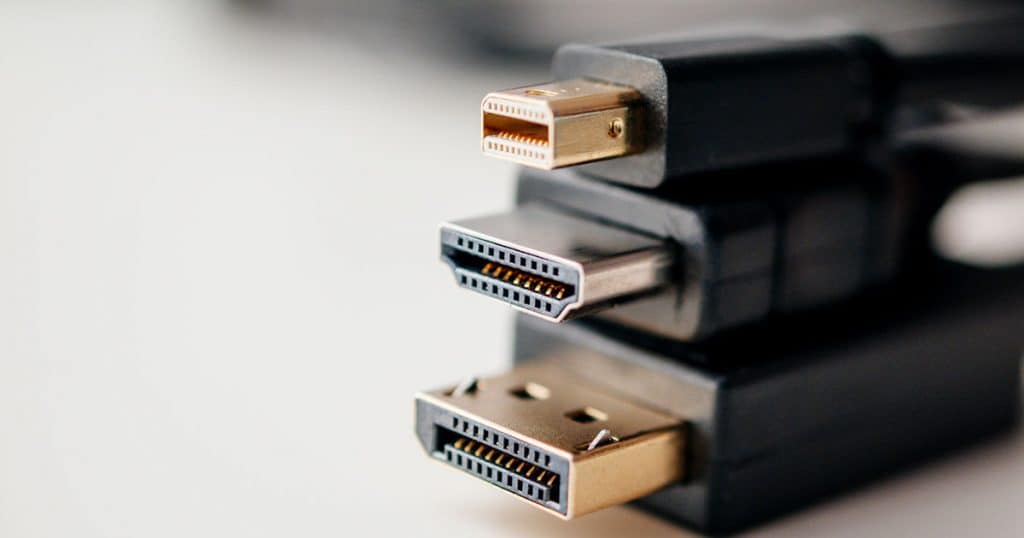
Either way, the right solution can make a big difference. A properly positioned monitor can reduce eye strain and mental fatigue. Updated cable connections can deliver a sharper image and improved productivity. And when the appropriate visual solution is deployed for your business and your staff, increased efficiency and satisfaction can follow.
Upgrading your display situation isn’t just about buying the nicest, the biggest, or the most expensive monitor. It’s about understanding the pros and cons of different monitors and different connections—and how suitable each solution is for you.
That’s why CMIT Solutions has compiled the following comparisons of VGA, DVI, DisplayPort, and HDMI technologies, along with recommendations for future decisions. Whether you’re looking to update equipment before the end of the calendar year or alleviate problems caused by old monitors, here’s hoping these tips can help.
VGA, short for Video Graphics Array, first debuted in 1987 and is now considered by many computer users to be an old-school technology. VGA cables have a 15-pin connector with three rows of five pins; each pin serves a distinct visual function, like only transferring the color blue or red. A VGA port on a desktop or laptop features a complementary number of pinholes, which allows the cable to connect. Fasteners on either side of the cable’s pin connecter can then be tightened for a secure fit.
VGA ports, cables, and connectors are falling out of favor, however, as they are phased out and replaced by updated interfaces like DVI, HDMI, and DisplayPort. VGA signals are analog instead of digital and suffer from poor quality. They can only carry video, too—not audio. And using a converter to switch VGA signals to DVI or HDMI can result in further degradation of image quality.
Also, VGA monitors provide a maximum resolution of 640×480 pixels (VGA connectors can provide a higher resolution capability); compare that to DVI’s maximum resolution of 1920×1200 or 2560×1600 pixels and the disparity is clear. IT experts recommend the following criteria when considering an update to an older VGA monitor.
If it’s being used:
·By an employee for more than six hours a day,
·To display graphics,
·To transmit audio,
·By an employee who has an eye condition or is prone to migraines,
It should be upgraded. But to what?
DVI stands for Digital Visual Interface and offers a much sharper, higher-quality image than VGA. DVI cables are unique because they can transmit both digital and analog signals. DVI cables can also be used as a “plug and play” option, meaning your computer doesn’t have to be shut down and restarted if you decide to use a DVI connector.
DVI cables come in three varieties: DVI-A (analog-only), DVI-D (digital-only), and DVI-I (compatible with analog and digital). Adding to the complexity, DVI-D also comes in single-link and dual-link formats—the latter offers a more powerful connection and faster data transfer rates. The difference between DVI and VGA connections may not be obvious when working with text or watching standard-definition videos. But it’s far more noticeable when using high-resolution graphics or watching high-definition videos.HDMI, or High-Definition Media Interface, is typically used for televisions and home theater systems, although many newer laptops and desktop graphic cards have now adopted the technology. The biggest benefit of the 19-pin HDMI connection is that it transmits video and audio signals, reducing the number of cables necessary for full coverage.
DisplayPort, or DP, is a digital display interface developed in collaboration with many PC and chip manufacturers. The 20-pin connection can carry audio and video simultaneously, although each signal can be transmitted on its own. The DisplayPort interface also uses a specific signal protocol that is incompatible with DVI or HDMI. That means an adapter is required, which can often reduce image quality.
A digital connection—DVI, HDMI, or DP—will always perform better than an analog VGA connection. If you still have VGA monitors in use by your employees, now’s the time to consider planning for an upgrade. The benefits of proper monitor use on posture and eye strain have been scientifically researched and proven. That means an upgraded screen can empower your employees to work smarter and more efficiently.
If your monitors are in good shape and have digital connections, room for improvement still exists. Ideal positioning is important; the monitor should always be at eye level to avoid causing unnecessary neck pain. An easy way to test this is to sit back in your office chair and hold your right arm out. Do your fingers point to the center of the screen? If not, change the height to accommodate a natural downward gaze.
Other important components include screen distance (can you read text on it without hunching over?), screen glare, screen angle, screen alignment, and reading comfort. Dual monitors can further enhance productivity, enable more agile multitasking, and empower employees. This is particularly true in industries where speed and precision are important. It also applies to anyone who works with large data sets or visual assets.
At CMIT Solutions, we help our clients operate better and spend smarter, investing in technology solutions that deliver a measurable return. When your company’s staff members can do their jobs safely, they’re far less likely to suffer injuries or take time off—a win-win for everyone.
Are you unsure about the state of your computer monitors? Have your employees expressed concern about eye strain or fatigue? Do you get sick of fumbling with display cables and adapters? Contact CMIT Solutions today. We worry about IT so you don’t have to.
